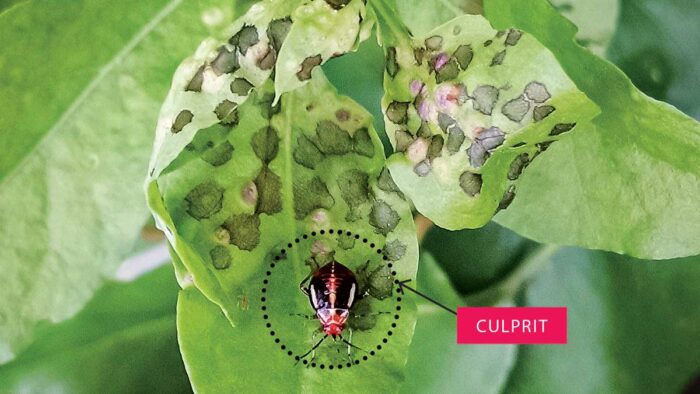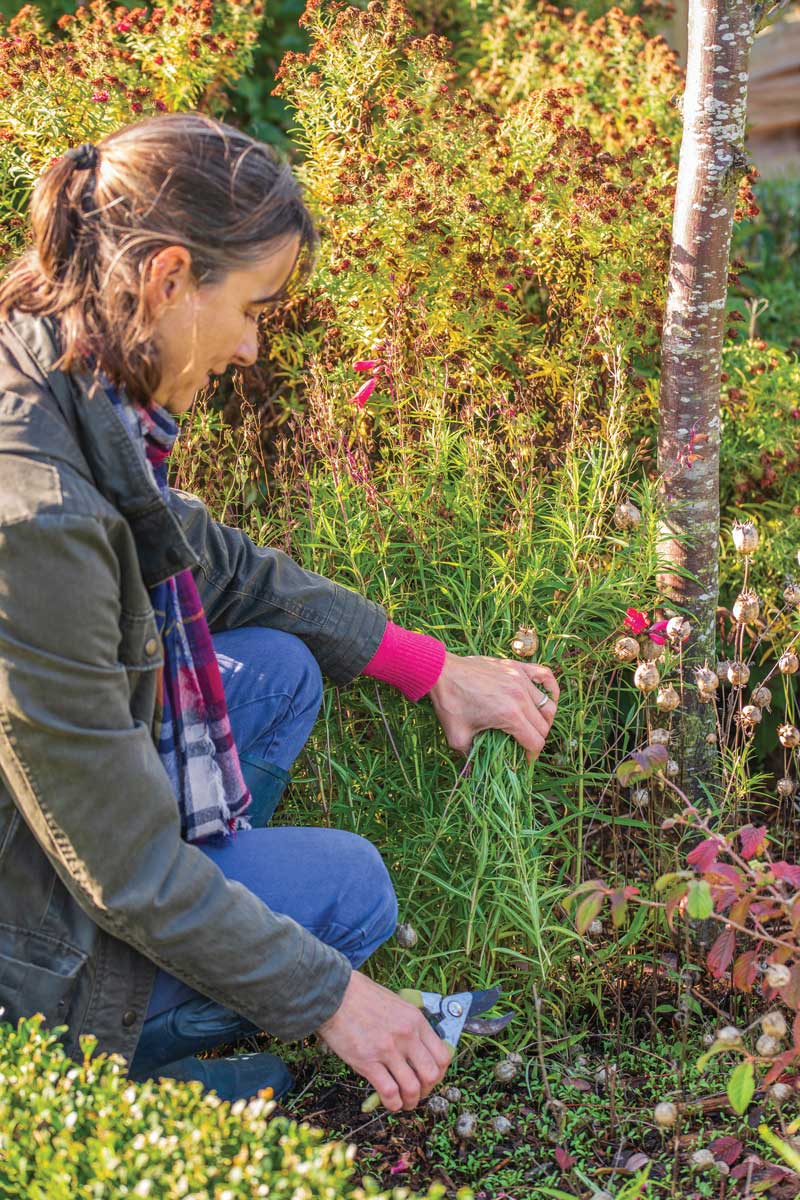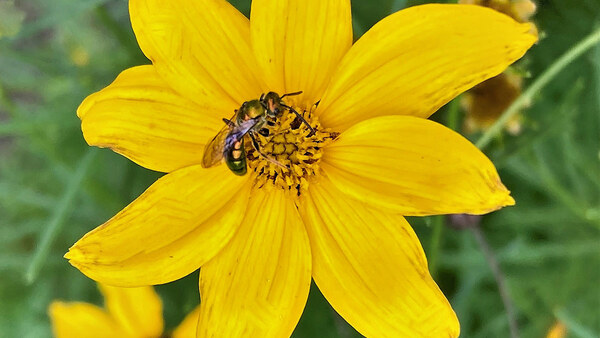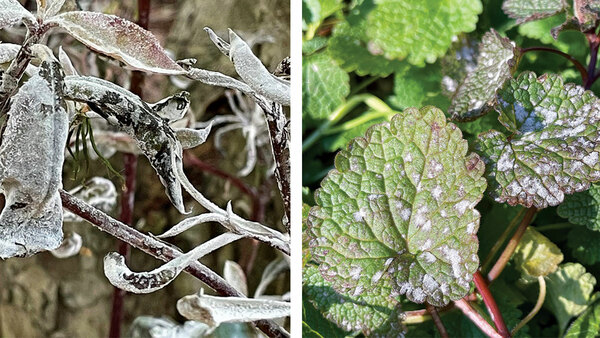
Small spots appearing on shoots of fresh mint and other spring herbs would draw the attention of most observant gardeners. But spots that seem to cover whole leaves overnight and begin to spread rapidly from shoot to shoot, then plant to plant? That is enough to instill panic for some, and often does! Thankfully, the situation may not be as bad as it first seems.
This curious blight pattern is one of the most common questions I address each year, appearing with clockwork predictability in late spring through early summer. The questions come first from concerned gardeners in southern states and then from Canadians a couple of months later. I say “blight,” but that term causes some confusion, as many gardeners associate it with one or more specific diseases, such as late blight of tomato or fire blight of apple, or with a specific group of pathogens, such as fungal or bacterial diseases. But the term best describes the symptoms of a problem—in this case, the rapid onset and spread of spotting, browning, and dying tissues, usually in the new growth of shoots and leaves. This blight is not caused by a rapidly progressing disease, but rather by the behavior of the true culprit, a shy insect native to the eastern and midwestern regions of the United States and Canada and known as the fourlined plant bug (Poecilocapsus lineatus).
Symptoms: Damage starts to appear in late spring

Fourlined plant bugs are conspicuous little insects, with bright red nymphs and handsome, bright green to yellow-green adults (just under ½ inch long) displaying four black stripes and triangular orange heads. It is surprising that they often go unnoticed, but their best defense is to avoid being seen. Chances are good they will slip underneath leaves or to the far side of stems if you are less than stealthy. For this reason, it is important to recognize the insects and the signs and patterns of their activity.
First, examine the spots of dead tissue. Are they roughly circular and focused on the tender new growth of shoots and leaves? Do the tiny spots lack a yellow halo and appear uniform in size? Fourlined plant bugs cause these damage symptoms because they feed using powerful cell-dissolving saliva, creating a
pattern of spotting unlike that of a typical fungal or bacterial spot disease progression. Severely affected leaves may crinkle and wither (photo), sometimes killing the shoot.
Next, ask, “Is it the correct time of year?” Fourlined plant bugs typically emerge to begin feeding on tender shoots of new growth in late spring and continue until midsummer, although damage is considerably less severe after they have fully progressed to adults. Finally, ask, “Is the affected plant a host of the insect?” Fourlined plant bugs feed on a wide range of plants, but those in the
mint and aster families are most often targeted. Vegetables can be damaged, but seldom severely. Trees are rarely targeted and never significantly affected.
How to treat it: Row cover can help

Thankfully, addressing fourlined plant bugs and their damage is relatively straightforward. Most important, remember that the insect is active for only a couple of months in the early season, and its targets are often quick-growing herbaceous plants. Severely damaged shoots that wither can be pruned off in summer. Weak or very young plants may be permanently stunted, but most plants have ample time and vigor to recover during the rest of the season, suffering little to no setback. Some cases may warrant further control if damage occurs on plants intended for sale or on susceptible garden vegetables. Some gardeners use floating row cover (photo) over their more susceptible vegetables, installing the fabric in early spring before the insects emerge. Insecticidal soap or horticultural oil products can be useful against the younger red nymphs.
Preventive care: A little winter cleanup keeps them under control

Preventing fourlined plant bugs from damaging your plants in the first place comes down to breaking the life cycle and reducing the local population. This can be achieved by removing overwintering eggs, which are laid in the stems of upper shoots on affected host plants. Watch for reoccurrence in your garden. You will likely notice the insects feeding on the same patch of plants year after year, rather than moving around to other potential host plants. Focus on those areas for removal of stems containing overwintering eggs, and spend a little more time there for winter season cleanup of debris.
If not for their habit of damaging valued herbs and vegetables in the early season, fourlined plant bugs might be appreciated for their striking appearance. Indeed, we forgive the damage of many caterpillars to enjoy the beauty of butterflies. However, we can at least approach management of this native herbivore with a higher tolerance for injury, observing which plants will go on to recover and thrive after the insects have disappeared for the season.
Matthew Borden, DPM, is a plant health consultant specializing in diagnostics and integrated management of landscape plant pests and diseases.


















Comments
Log in or create an account to post a comment.
Sign up Log in